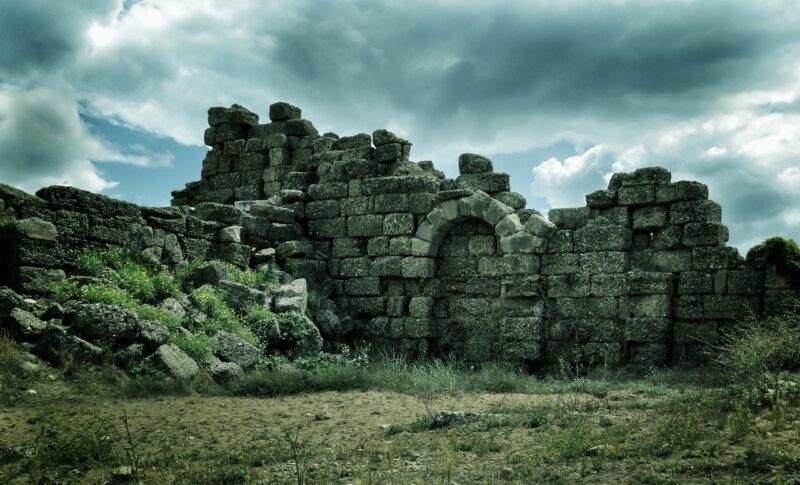Traveling Through Time: Visiting the World’s Most Fascinating Ancient Sites
November 13, 2024

Traveling is one of life’s greatest pleasures, and when you have the chance to explore the world’s most fascinating ancient sites, it becomes a journey through time. Every ancient ruin tells a tale of human ingenuity, culture, and the evolution of civilizations long gone.
From the majestic pyramids of Egypt to the intricate temples of Angkor Wat in Cambodia, ancient sites provide glimpses into the lives, beliefs, and practices of those who came before us. Let’s embark on a virtual expedition to some of the most awe-inspiring ancient sites around the globe, exploring their histories, significance, and the enduring mysteries they hold.
1. The Pyramids of Giza, Egypt
The Pyramids of Giza, standing proudly on the outskirts of Cairo, are perhaps the most iconic ancient structures in the world. Constructed around 2580–2560 BC during the Fourth Dynasty of the Old Kingdom of Egypt, these monumental tombs were built for Pharaohs Khufu, Khafre, and Menkaure.
Key Highlights:
– The Great Pyramid of Khufu: The oldest of the three and the largest pyramid ever built, originally standing at 146.6 meters (481 ft).
– Historical Significance: The Pyramids are a testament to the architectural prowess of the ancient Egyptians and their complex society that revered the afterlife.
– Curiosities: The precise methods of construction remain largely a mystery, adding an element of intrigue for those who visit.
Visiting the pyramids is an unforgettable experience, and standing at the base of these giants transports you back to the age of the Pharaohs.
2. Machu Picchu, Peru
Hidden high in the Andes Mountains, Machu Picchu is a UNESCO World Heritage Site and one of the most visited archaeological sites in the world. Built in the 15th century by the Inca emperor Pachacuti, this awe-inspiring citadel was abandoned during the Spanish Conquest and remained unknown to the outside world until its rediscovery in 1911.
Key Highlights:
– Incredible Architecture: The site showcases the Incas’ sophisticated dry-stone construction methods, evidenced by the perfectly fitted stones that have withstood countless earthquakes.
– Cultural Exploration: Visitors can gain insights into Inca culture and spirituality, exploring temples, agricultural terraces, and astronomical observatories.
– Stunning Scenery: The breathtaking panorama of the surrounding mountains adds to the overall magic of visiting this ancient site, making it a favorite among hiking enthusiasts.
Traveling to Machu Picchu is not just about reaching a destination; it’s about experiencing the rich culture and history of the Inca civilization.
3. Angkor Wat, Cambodia
Among the largest religious monuments ever constructed, Angkor Wat is a sprawling temple complex originally built in the early 12th century as a Hindu temple dedicated to the god Vishnu. It later transformed into a Buddhist temple, reflecting the evolution of the region’s religious practices.
Key Highlights:
– Extravagant Design: The layout symbolizes a miniature replica of the universe in stone, with the central tower representing Mount Meru, the axis of the world in Hindu and Buddhist cosmology.
– Cultural Significance: Angkor Wat is a symbol of Cambodia and its national pride, reflecting the intricate artistry and architectural skills of the Khmer Empire.
– Visually Stunning: The rise of the sun casts a breathtaking glow on the temple, creating a mesmerizing view for early risers.
Exploring Angkor Wat allows visitors to uncover the spiritual and artistic heart of Khmer culture, making it a must-see for any history enthusiast.
4. The Colosseum, Rome, Italy
An iconic symbol of Imperial Rome, the Colosseum was commissioned by Emperor Vespasian in 70 AD and completed in 80 AD. This grand amphitheater could host thousands of spectators for gladiator contests and public spectacles that highlighted the power and skill of ancient Rome.
Key Highlights:
– Architectural Marvel: The Colosseum is a stunning example of Roman engineering, featuring a complex system of vaults and arches that have stood the test of time.
– Historical Importance: It serves as a reminder of the complexities of Roman society, where entertainment often involved violence and spectacle.
– Modern Relevance: Today, the Colosseum attracts millions of visitors, and ongoing restoration efforts aim to preserve this incredible structure for future generations.
Walking through the arches of the Colosseum allows visitors to feel the echoes of history reverberate, engaging with the grandeur of the Roman Empire.
5. Stonehenge, England
Stonehenge is a prehistoric monument located on the Salisbury Plain in Wiltshire, England. While the exact purpose of these massive standing stones remains a mystery, they are believed to have been constructed between 3000 BC and 2000 BC.
Key Highlights:
– Mystical Aura: The significance of Stonehenge varies from astronomical calendar theories to religious and burial practices of ancient peoples.
– Cultural Impact: The site represents the ingenuity and capabilities of Neolithic humans, showcasing their skills in moving and erecting enormous stones.
– Visiting Experience: The serene surrounding landscape provides a unique atmosphere, allowing visitors to ponder the mysteries of this ancient site.
Stonehenge has captivated the imaginations of many, making it a symbolic cultural landmark that tells the stories of our distant ancestors.
Conclusion
Visiting ancient sites offers a unique opportunity to connect with the past, understanding the legacies left behind by past civilizations. These sites, each with their own unique stories and mysteries, provide valuable insights into human history, creativity, and cultural evolution.
As we travel through time by exploring these ancient wonders, we are reminded of the incredible feats of architecture, engineering, and spirituality that shaped our world. So pack your bags, and embark on a journey to these incredible ancient sites—each a testament to the resilience and ingenuity of humanity that has stood the test of time.







